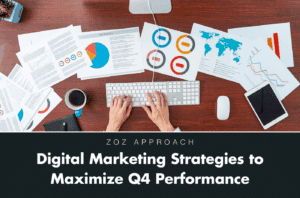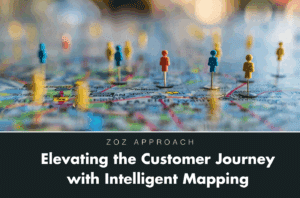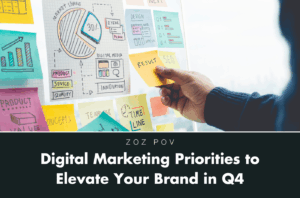Educating patients about healthcare therapies is crucial for ensuring that they understand how to use devices and medications safely and effectively. This understanding leads to better adherence to treatment plans, improved health outcomes, and increased satisfaction among both patients and providers. In industries such as Medical Device, Pharma, and Biotech, patient education is not just beneficial—it’s essential.
However, patient education content can also serve another critical role: expanding the market for drugs or devices by informing potential patients about their capabilities and how they can improve health outcomes. Savvy healthcare marketers recognize the potential of patient education as a tool to inform, engage, and expand patient populations. Ignoring the potential of patient education in marketing is a missed opportunity that could result in lost market share.
The Importance of Patient Education in Healthcare
Patient education is the cornerstone of effective healthcare delivery. It helps patients understand their conditions, treatment options, and the steps they need to take to achieve better health outcomes. Patient education materials that clearly explain how to use a device or medication can significantly improve treatment adherence, boost patient and provider satisfaction, leading to better health outcomes and reduced healthcare costs.
Educated patients are empowered patients and robust, informative patient education content will continue to be created by Biotech, Pharma and Medical Device companies alike.
Challenges Healthcare Marketers Face
In the broader world of marketing to patients, healthcare marketers face several challenges in creating awareness around their companies’ therapies and the conditions associated with them. These challenges include identifying and reaching the right audience, engaging increasingly small and specific audience pools, and helping potential patients recognize symptoms that may indicate a treatable condition. In this section, we will discuss these challenges in more detail.
Identifying and Reaching the Target Audience
One of the primary challenges healthcare marketers face is identifying and reaching their target audience. In an increasingly digital world, where patients have access to a vast amount of information, it can be difficult to cut through the noise and reach the right people with the right message. This challenge is compounded by the fact that patients often have different levels of health literacy, making it necessary to tailor content to meet the needs of diverse audiences.
Engaging Increasingly Small and Specific Audience Pools
In some cases, healthcare marketers need to reach very small and specific audience pools, particularly in the context of rare diseases. These patients may be difficult to identify and engage, and traditional marketing strategies may not be effective in reaching them. However, by leveraging the power of patient education content, healthcare marketers have another opportunity to create materials that are highly targeted and tailored to the needs of these specific populations.
Helping Patients Recognize Symptoms
Another challenge healthcare marketers face is helping potential patients recognize symptoms that may indicate a treatable condition. Many patients may not be aware that their symptoms could be related to a specific condition, and as a result, they may not seek discussions with their physician. By creating patient education materials that clearly explain the symptoms of a condition and how they relate to potential treatment options, healthcare marketers can help bridge this gap and encourage patients to take action.
Strategies for Optimizing Patient Education Content
To help overcome these challenges, healthcare marketers can optimize their patient education content to ensure it is accessible, informative, and engaging beyond only existing patients. In this section, we will discuss several strategies for optimizing patient education content, including creating high-quality, searchable content, leveraging symptom information, and maximizing the reach of owned content properties.
Creating High-Quality, Searchable Content
Quality patient education materials can be incredibly useful for effective healthcare marketing. These materials need to be not only informative but also easily accessible and searchable. By aligning patient education content with both informational and marketing search objectives, healthcare marketers can ensure that their materials are more likely to be found by potential patients who are actively seeking information about their symptoms or conditions.
Aligning Content with Search Objectives
When potential patients begin to research their symptoms, they often use search terms that closely align with patient education content. By recognizing this crossover, healthcare marketers can optimize their content to appear in relevant search results, drawing the right potential patients to their owned content properties. This approach not only increases the visibility of patient education materials but also helps to reach a broader audience.
Leveraging Symptom Information in Patient Education
Symptoms are often the first indication that something is wrong, and patients are likely to search for information related to their symptoms well before they speak with a healthcare provider or have a diagnosis. By creating patient education materials that initially focus on symptom information and connect those dots to indicated conditions, healthcare marketers can capture the attention of potential patients early in their research process. This can be a powerful tool in drawing the right potential patients to owned content properties and guiding them toward a conversation with their physician and appropriate treatment options.
The Role of Patient Advocacy in Marketing
Patient advocacy teams play a crucial role in healthcare marketing by providing valuable insights into patient needs and preferences. By collaborating with these teams, healthcare marketers can contribute to patient education materials to make them more relevant and impactful. Additionally, patient education can be used as a tool to expand patient populations by reaching new audiences and raising awareness about available treatment options.
Compliant Messaging in Patient Education
Ensuring Accuracy and Compliance
One of the biggest challenges in healthcare marketing is ensuring that all patient education materials are accurate and compliant with regulatory standards. In the medical device, pharmaceutical, and biotech industries, don’t forget there is little room for error when it comes to patient information. Regulatory guidelines dictate how healthcare information should be communicated to patients so you will need to proceed thoughtfully. Ensuring compliance is not just about avoiding legal repercussions—it’s about maintaining trust with patients.
While Patient Education materials can be very powerful marketing tools, it remains crucial to ensure all of the above tactics remain compliant and accurate when being implemented. To achieve this, healthcare marketers must work closely with regulatory teams to review and approve all patient education materials. This includes verifying the accuracy of medical claims, ensuring that risk information is clearly presented, and avoiding any misleading or exaggerated statements. By prioritizing compliance, marketers can ensure that their content is both trustworthy and legally sound.
Balancing Informative and Persuasive Messaging
While compliance is critical, healthcare marketers also need to strike a balance between being informative and persuasive. Patient education content should provide clear, accurate information that helps patients make informed decisions about their health. However, it should also be engaging enough to capture their attention and motivate them to take action.
This can be achieved by focusing on the patient’s needs and concerns. Instead of overwhelming them with technical jargon or complex medical details, the content should be presented in a way that is easy to understand and relevant to their situation. Marketers can use storytelling techniques, patient testimonials, and real-world examples to make the content more relatable and compelling. The goal is to educate patients while also encouraging them to explore their treatment options and engage with their healthcare providers.
Case Study: Success Storytelling in Patient Education
In this case study, a leading medical device company launched a new device designed to help patients with sleep apnea manage their condition more effectively. The company faced the challenge of raising awareness about the device among a diverse patient population, many of whom were not familiar with sleep apnea or its potential health risks.
To address this, the marketing team developed a comprehensive awareness campaign that included enhancing patient education materials such as educational videos, infographics, and a dedicated website. The content was designed to educate patients about the symptoms of sleep apnea, the risks of untreated sleep apnea, and how the new device could help. The campaign also leveraged SEO strategies to ensure that the content was easily discoverable by patients searching for more general information about sleep apnea and symptoms they were experiencing.
The results were impressive. The campaign not only increased awareness of sleep apnea but also drove significant traffic to the company’s website, resulting in a substantial increase in inquiries about the new device. Ultimately, the campaign contributed to a successful product launch and helped the company establish itself as a leader in the sleep apnea market.
Conclusion
In the competitive landscape of healthcare, patient education is more than just a compliance requirement—it’s a powerful tool for engaging patients, improving health outcomes, and expanding market reach. By creating high-quality, compliant, and engaging patient education materials, healthcare marketers can address key challenges such as reaching the right audience, helping patients recognize symptoms, and encouraging physician conversations.
Whether you’re launching a new drug therapy or medical device, the strategies outlined in this article can help you achieve your goals. Remember, the key to success lies in understanding your patients’ needs, providing clear and accurate information, and making that information easily accessible through well-optimized, patient-focused content.
FAQs
Why is patient education important in healthcare marketing?
Patient education is crucial because it helps patients understand their health conditions, treatment options, and the steps they need to take to improve their health outcomes. It also plays a key role in expanding market reach by informing potential patients about available therapies.
How can healthcare marketers ensure their patient education materials are compliant?
Compliance can be ensured by working closely with regulatory teams to review and approve all content. This includes verifying the accuracy of medical claims, presenting risk information clearly, and avoiding any misleading statements.
What are some effective strategies for creating engaging patient education content?
To create engaging content, healthcare marketers should focus on the patient’s needs and concerns, use relatable language, and incorporate storytelling techniques, patient testimonials, and real-world examples.
How can patient education content be optimized for search engines?
Patient education content can be optimized by aligning it with common search terms used by patients when researching their symptoms. This involves using keywords strategically, creating high-quality, informative content, and ensuring that the content is easily accessible and shareable.
What role does patient advocacy play in healthcare marketing?
Patient advocacy teams provide valuable insights into patient needs and preferences, helping marketers create more relevant and impactful education materials. They also help amplify the reach of these materials by sharing them with their networks and encouraging patient engagement.

Nick Lowe
Senior Partner
Nick is focused on building an elite team of experts that can do extraordinary work for our clients. Since founding Zozimus, the agency has grown steadily to a full-service offerings supported by industry veterans and rising stars alike. Nick has spent a lot of time building an organization and structure that can scale, but it’s his involvement in key client projects that makes him most excited.
BOSTON, MARS



